We asked several EMR and consulting executives the following question:
Regarding the Allscripts/Eclipsys acquisition, what are some of the broader implications for the HIT industry?
J.P. Fingado, President and CEO, API Healthcare
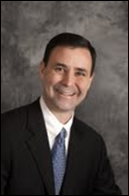
This was a strong move by Allscripts but the key piece to watch is how well they integrate the companies and solutions.
I believe this is a clear action that demonstrates the industry will see significant consolidation over the next 2-3 years. We will be left with 2-3 major players in several key segments such as clinical, financial, workforce/human capital, and connectivity. Companies will move to create value for their clients by managing and mining vast amounts of data. The value will come from aggregating and gleaning operational and clinical insights from the data that flows between the applications inside healthcare delivery facilities as well as between disparate organizations. Once that data is managed on a common technology platform, analytics can be applied more easily and the data can be transformed into knowledge that facilitates improved care and improved operations.
Hidden within the data there are many answers to medical conditions, running hospitals and practices more efficiently and providing better quality. We have proven as an industry that interfaces between disparate data repositories, while of some value, will never generate anything more than limited results at a higher cost. Having related data, such as workforce, on a single platform substantially increases the ability to turn data points into impactful insights.
Vic Arnold, Managing Partner, AsquaredM
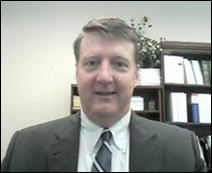
In general, I have watched a lot of companies try to merge themselves to greatness. Merger seems to be the most difficult business maneuver of all methods of growth.
I recall Phamis and IDX among others and somehow, these deals never quite become a full fledged single entity. The differences in organizational culture, code base, sales force and many other factors seem never to yield to a true winner.
It all reminds me of Tom Wait’s song “What’s he Building” or that nagging phrase I can’t get out of my head when I think about this deal – “King of the Zombie system sellers”, or something like that. The upside is that Mr. Tullman did get rid of his English masters and that may be the best thing to happen from all this. The truth of this deal will be to see what products in the current mash up get taken care of and are allowed to grow and prosper.
Shane Hade, CEO, EDIMS
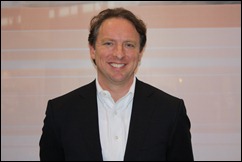
Consolidation has been and continues to be both inevitable and necessary in the EMR industry. There are too many vendors, many with partial and inferior solutions, creating confusion and frustration for hospitals. Rationalization of the market, through mergers like Allscripts/Eclipsys can strengthen the offerings and can help to streamline decision making process for hospitals looking to acquire HIT.
Especially in critical care areas like the ED where our company, EDIMS, operates, hospitals and ultimately patients can’t afford to have inadequate solutions, yet choosing among the plethora of solutions available is time consuming and challenging, putting hospitals at a serious disadvantage. Too often we see, hospitals, afraid to make bad decisions, delay or choose to make no decision.
The industry and the quality of healthcare will be improved through strategic market consolidation.
Ron Sgro, CEO/Co-Founder, Enovate

First of all, the acquisition better positions Allscripts to gain access to $30 billion in federal funds for the adoption of electronic healthcare records! J
It would have been hard for any company to take the reins in EMR without reaching into the hospital space and it will be interesting to see what impact this merger will have on other ambulatory EHRs, such as NextGen and eClinicalWorks. Any concern I might have would be for dbMotion as they’ve only been involved with AllScripts for a year– and Eclipsys has a partnership with Microsoft and the Amalga platform – which is very similar to dbMotions solution.
My hope is that this is a possible attempt to unite a market where currently, hospitals and physicians choose from a wide range EMRs. Standardization is the ultimate goal here, perhaps this is one way of trying to reach it.
Peter J. Butler, President, Hayes Management Consulting

As the HIT industry seeks interoperability between disparate platforms as well as the hospital and ambulatory environments, acquisitions like this will be the true test of whether multiple platforms now being sold by a single vendor can truly be interoperable. The industry has not been able to accomplish this yet, and there isn’t much time left for Allscripts/Eclipsys to prove this. However, if Allscripts/Eclipsys’ result is a cohesive fully interoperable product suite, it will mean a positive breakthrough for the HIT industry.
Dave Dyell, Founder & CEO, iSirona

Any time acquisitions like this take place, I get concerned about innovation in our space. Over time, you can end up with 800-pound gorillas that don’t have as much of an incentive to be on the cutting edge. A great parallel is the ERP market: when has anything new and exciting happened there? Neither SAP, Oracle or even Microsoft is driven to come out with anything new or game-changing.
I think this specific acquisition has a lot to do with the American Recovery and Reinvestment Act (ARRA), which is laying out very specific Meaningful Use criteria. Hospitals that haven’t plugged that hole now will need to. To take advantage of that, Allscripts needed to go to the inpatient side, where they have been less than successful. Ultimately, this step towards a connected healthcare environment—where physicians can log in from their office and see records in the hospital—will be very good for Allscripts’ end users.
This is a very exciting time in the HIT industry. Acquisitions aside, my hope is that as an industry we remain committed to exploring new technologies to advance healthcare.
James K. Lassetter, M.D., CEO, Medicity
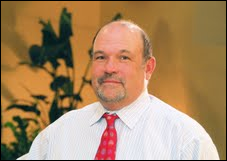
New health reform legislation and emerging care delivery models like patient-centered medical homes and accountable care organizations mean that vendors must strategize to meet their clients’ need to drive tighter integration and coordination between hospitals and affiliated physicians.
Allscripts/Misys have traditionally focused on the ambulatory space, which worked in the ‘old world.’ Now, in the new world of ACO and bundled payments, the combined Allscripts-Eclipsys organization can help bridge the inpatient-outpatient gap and promote efforts to connect care for patients.
Earlier this year, NextGen announced its acquisition of Opus Healthcare and Sphere Health. It would have been surprising if Allscripts left that move unanswered. These transactions are the first of many roll-up strategies we can expect to see driven by – among other things – mounting pressure for healthcare to be more collaborative.
Janet Dillione, EVP and GM, Healthcare Division, Nuance
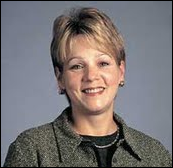
The union of Allscripts and Eclipsys marks a shift in the EMR market.
While today, the EMR market is vast, comprised of hundreds of vendors and solutions, moving forward it is likely that we’ll see more vendor collaboration in the form of acquisitions and strategic partnerships. Hospitals and physicians have too many solutions to choose from, making the move to digitize medical records that much more difficult. Combining the best resources and technologies across the healthcare IT market will reinforce the healthcare industry’s ability to evolve at a technical level.
As part of this, Nuance is uniquely positioned to support ongoing EMR innovation by adding speech recognition and speech-driven command functionality to the EMR workflow. While vendor selection is a critical part of healthcare organizations’ EMR undertaking, system usability is the make or break component as to whether these systems will having staying power.
Over the next few years the focus will remain on Meaningful Use. In order to achieve Meaningful Use, healthcare organizations must overcome the various hurdles associated with EMR adoption and the healthcare IT industry must deliver solutions that ensure non-disruptive and effective usability that will lower costs and impact improved patient care.
Craig Klein, Director, Red Hat Healthcare Vertical
The acquisition of Eclipsys by Allscripts has a number of implications for the HIT industry, both today and in the future.
First, this purchase exemplifies the move of companies in the EHR market to position themselves technologically to pursue stimulus money for HIEs. Moreover, this action highlights the desire for stronger control over the healthcare delivery system as a whole.
In addition to the acquisition’s implications for the industry today, it is also telling for the future. For example, this purchase implies further market consolidation in terms of the number of companies selling EHR applications. Acquisitions and mergers of ambulatory and inpatient application companies will continue to minimize the overall size of the HIT industry.
Bruce Cerullo, Chairman & CEO, Vitalize Consulting Solutions, Inc.

The combination of Allscripts’ industry leading ambulatory capabilities with Eclipsys’ deep hospital penetration makes perfect sense as healthcare systems accelerate their migration plans for integrated end-to-end clinical/HIT solutions.
This is a logical next step in the realignment of the healthcare IT sector in response to business opportunities stimulated by ARRA, HITECH, HIPAA 5010, and ICD-10 mandates. Other seismic shifts have already occurred (e.g. Xerox/ACS/FCG, Dell/Perot) and others are likely to follow.
To successfully compete in the future, both HCIT product and service companies will need to be able to offer a continuum of ambulatory and hospital solutions. Bandwidth and diversity of offerings, coupled with the scale to manage complex projects, will be key differentiators.


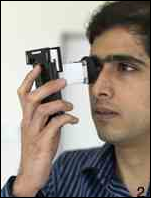

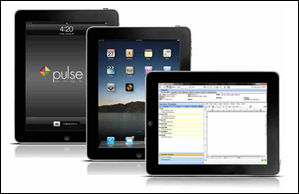






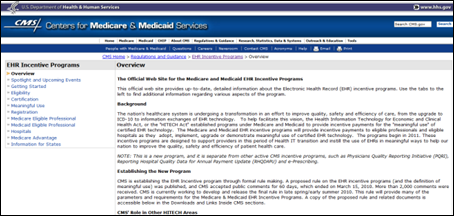
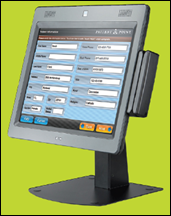











The article about Pediatric Associates in CA has a nugget with a potentially outsized impact: the implication that VFC vaccines…